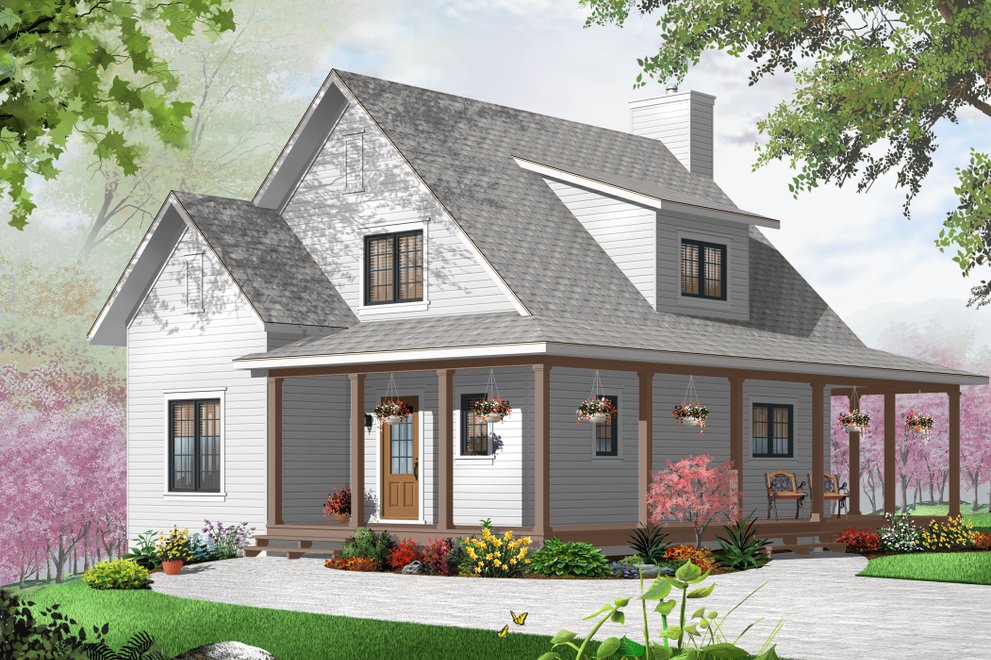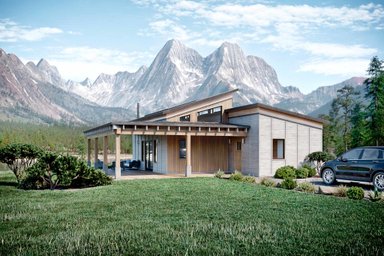As an architect designing smaller, custom residential projects for the last few decades, I know that an incredibly important component to any successful project is the builder. While this seems obvious, it was something I took for granted when working on large, complex commercial and institutional projects. So when entering into the single family home arena, I had to learn who the good builders were and make sure that they would build my project. In short, cultivating a group of small builders has been just as important to my success as cultivating a market of homeowners willing to hire me as their architect. And for builders, having a good relationship with architects can go a long way to keeping a steady stream of work coming their way. So here are 5 things I’ve learned that are crucial to a builder having a good reputation with an architect.
1. Nothing is complete and perfect; least of all a set of detailed construction drawings. So when a detail is missing or there’s some other problem with the drawings you have, don’t start complaining to the client.Talk to the architect and explain the issue. Get things solved and the project back on track outside the eyes and ears of the homeowner. Most architects will work with you to try to understand your dilemma and help solve the problem. And you’ll make a friend for life by not airing the architect’s dirty laundry in public.
2. Don’t change the design, no matter how much the client wants you to. At some point during the construction, the client will come through and complain that he didn’t know it “would look like that” or “this room is too small” or one of a countless number of complaints. When the client does this, don’t just start making the change. Gently persuade the client that the person to take all of this up with is the architect. As the builder, you’re there to build what’s on the drawings. Let’s face it, the client and architect have worked for months putting together a design that suits the client’s needs, so making changes on the fly may just result in a less than satisfactory project when all complete. And of course the other danger is that making a simple change on one small thing will result in other other problems down the road.
3. Avoid ego trips. Getting a project built on time, to budget and with the quality desired isn’t all that easy. It’ll take each stakeholder to be on her/his best behavior (except for the client, because the client is, after all, the client). Just as a builder won’t enjoy working alongside an architect who is temperamental and egotistical, so an architect won’t enjoy working alongside a builder who is flighty and irresponsible.
4. Avoid the panic of a failed inspection and the inevitable delay it causes; so give the architect a heads-up when the inspector is about to come out and that you’ll need the detail drawn for that change you made so the project doesn’t just stop. Sure, changing that fastener to brand “X” from the specified brand “Y” seemed like a good thing to do at the time, but the inspector wants the drawings revised to reflect that. If the architect knows about the change in advance, she/he can have the drawing ready for you when the inspector shows up. If the architect doesn’t know, she/he has to either drop everything else to get you the drawing to keep the job moving or put you on the back burner until later. Such a situation is not good for you or the architect and definitely not for the client.
5. Being prepared is half the battle; or, as some would say, the entire battle. Simply having the most current drawings on site and knowing the details of the project will go a long way to giving the architect a level of comfort that you are, in fact, the right builder. Preparedness extends to the act of ensuring that materials and craftsmen show up on time and when needed. Preparedness is knowing that things will go wrong, especially when building a home, and planning for that fact as much as possible. Believe me, an architect will really appreciate a builder who does this so the client isn’t calling in the middle of the night because that custom vanity from Italy didn’t come in as ordered and “How could you let me buy that!”
In the end, recognizing that builder and architect comprise a team committed to mutual support will make for a more successful and enjoyable project.
1. Nothing is complete and perfect; least of all a set of detailed construction drawings. So when a detail is missing or there’s some other problem with the drawings you have, don’t start complaining to the client.Talk to the architect and explain the issue. Get things solved and the project back on track outside the eyes and ears of the homeowner. Most architects will work with you to try to understand your dilemma and help solve the problem. And you’ll make a friend for life by not airing the architect’s dirty laundry in public.
2. Don’t change the design, no matter how much the client wants you to. At some point during the construction, the client will come through and complain that he didn’t know it “would look like that” or “this room is too small” or one of a countless number of complaints. When the client does this, don’t just start making the change. Gently persuade the client that the person to take all of this up with is the architect. As the builder, you’re there to build what’s on the drawings. Let’s face it, the client and architect have worked for months putting together a design that suits the client’s needs, so making changes on the fly may just result in a less than satisfactory project when all complete. And of course the other danger is that making a simple change on one small thing will result in other other problems down the road.
3. Avoid ego trips. Getting a project built on time, to budget and with the quality desired isn’t all that easy. It’ll take each stakeholder to be on her/his best behavior (except for the client, because the client is, after all, the client). Just as a builder won’t enjoy working alongside an architect who is temperamental and egotistical, so an architect won’t enjoy working alongside a builder who is flighty and irresponsible.
4. Avoid the panic of a failed inspection and the inevitable delay it causes; so give the architect a heads-up when the inspector is about to come out and that you’ll need the detail drawn for that change you made so the project doesn’t just stop. Sure, changing that fastener to brand “X” from the specified brand “Y” seemed like a good thing to do at the time, but the inspector wants the drawings revised to reflect that. If the architect knows about the change in advance, she/he can have the drawing ready for you when the inspector shows up. If the architect doesn’t know, she/he has to either drop everything else to get you the drawing to keep the job moving or put you on the back burner until later. Such a situation is not good for you or the architect and definitely not for the client.
5. Being prepared is half the battle; or, as some would say, the entire battle. Simply having the most current drawings on site and knowing the details of the project will go a long way to giving the architect a level of comfort that you are, in fact, the right builder. Preparedness extends to the act of ensuring that materials and craftsmen show up on time and when needed. Preparedness is knowing that things will go wrong, especially when building a home, and planning for that fact as much as possible. Believe me, an architect will really appreciate a builder who does this so the client isn’t calling in the middle of the night because that custom vanity from Italy didn’t come in as ordered and “How could you let me buy that!”
In the end, recognizing that builder and architect comprise a team committed to mutual support will make for a more successful and enjoyable project.






